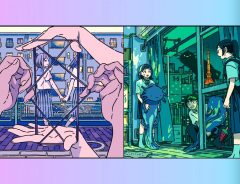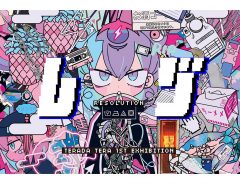
Source: 擘 Tsunzaki (@TSUNZAKI) - images reproduced with permission
Japanese illustrator Tsunzaki’s genius character designs for inhumans trying to pass as humans
- Tags:
- Character / inhuman / japanese illustrator / non-human / Tsunzaki
Related Article
-

Life, Death and Dreams: The Beautiful and Fashionable Art of Shikimi
-

Six cute hime cut hairstyles according to illustrator Narumi Hosokawa
-

Japanese artist’s illustrations dare you to find fantasy in ordinary Tokyo apartments
-

Adorable Koupen-chan themed cafes open for a limited time in 4 cities across Japan
-

Lure of the City: Upar’s Airy and Uplifting Illustrations Will Kindle Your Wanderlust
-

Popular illustrator and manga artist Tera Terada has her first solo exhibition: “LEZO”


Characters with a hidden side or a secret have always been a staple of fiction and art but in the last half-century or so, the genres of fantasy, horror, and science-fiction have surely opened up the playing field even further. For example, when it comes to the idea of inhumans living among humans, the range of possibilities continues to expand.
When Haruhi Suzumiya said: "I'm not interested in ordinary people. But, if any of you are aliens, time-travelers, or espers, please come see me," she also voiced the curiosity—perhaps even the fantasy— that many viewers felt of encountering someone or something outside of the realm of the ordinary. It also suggested the possibility, among other things, that those who appear to be human may, in fact, be something else, even as they sit next to you twiddling their pen in class.
Popular Japanese illustrator and manga artist 擘 (pronounced "Tsunzaki") is very fond of blurring the lines between human and non-human, as well as the living and non-living. Tsunzaki's illustrations depict inanimate objects which have come to life, very often with human-like traits, as well as non-humans living among humans, portrayed with an amazing sense of style, dynamism, and clever design.
Earlier this month, Tsunzaki's genius was highlighted in a pair of panels which went viral, garnering over 103,000 likes and 21,000 retweets at the time of writing:
"I like characters who pretend to be human, but when they take off their clothes, they're completely inhuman!!!!!!"
Reproduced with permission from 擘 (@TSUNZAKI)
Reproduced with permission from 擘 (@TSUNZAKI)
The first panel shows characters representing six different professions: a (Catholic) sister, a rōnin (a masterless samurai in feudal Japan), an astronaut, a diver, a Shinto priest, and a (medical) doctor. There are already visual cues that each of them are not ordinary versions of their stated professions. The sister has a 'no' symbol instead of a halo above her head, the Shinto priest wearing a fox mask has strange red appendages sprouting from either side of its head, the doctor is dressed in a plague doctor's mask, etc.
The second panel shows the same characters revealing their true identities. The sister turns out to be less than saintly, the astronaut is literally a spaceman, the diver is a Cthulhian creature, and the doctor's plague mask (the historical design of which gave the wearer an avian appearance only by coincidence, not by intent) turns out to be hiding an actual beak.
The attention to design and the ingenuity shown in the expression of each character makes this series particularly appealing, eliciting numerous plaudits on Twitter:
Tsunzaki has many more amazing illustrations on their Twitter account. For example:
"The twelve Zodiac signs, inhuman version (2nd panel is a variant)"
"They don't have a name, just a design. Ex-humans."
"This may be the first time I made a CP (character profile) for an original work."
"anonymous animosity"
"The honey peddler comes at nightfall."
If you'd like to explore more of Tsunzaki's world, visit one of the following links: